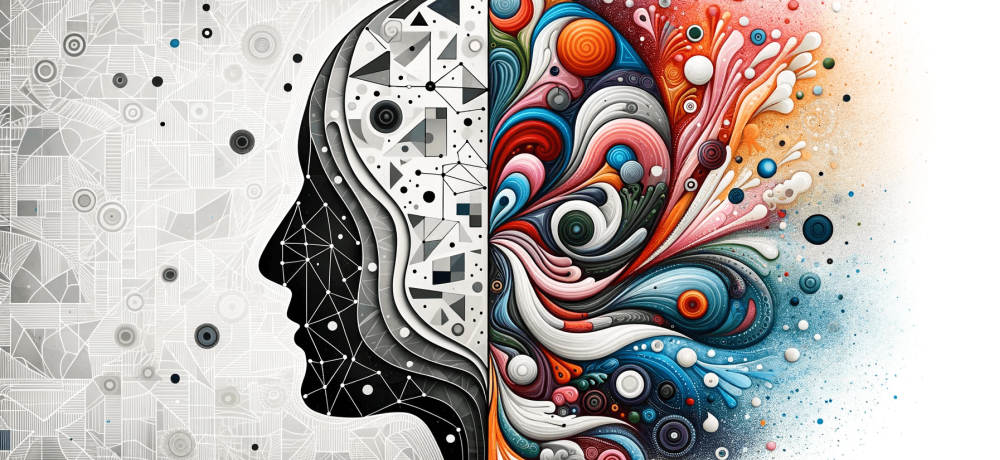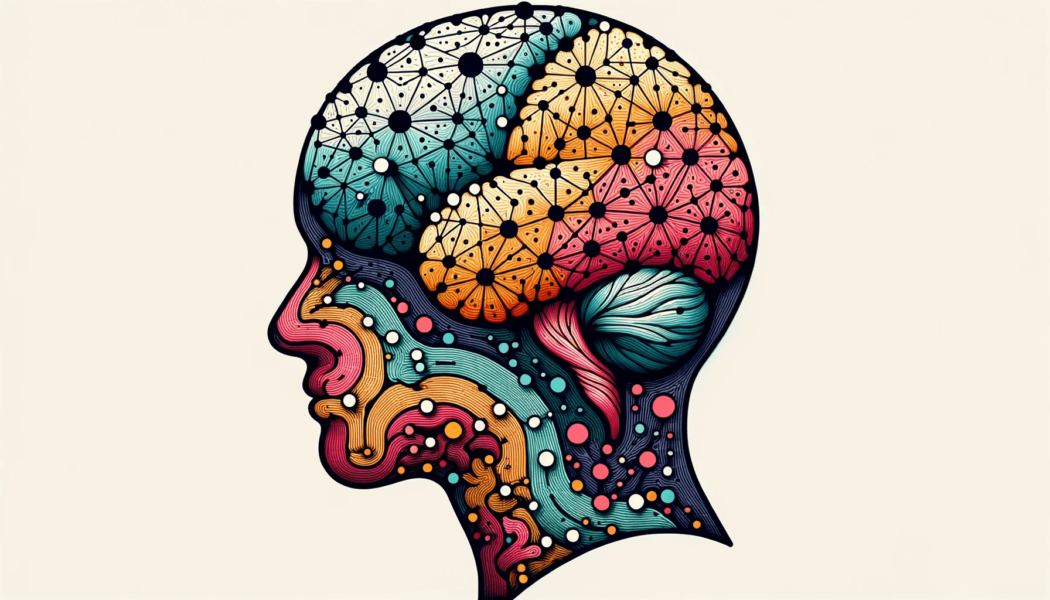
The #1 Neuroscience Myth in Coaching
This is a guest article written by Haris Mexas, an ICF-accredited coach, on the biggest neuroscience myth in coaching (and leadership).
Do I have a rational and an emotional brain?
In the vast landscape of coaching and leadership, an enduring myth has taken hold. It is an idea propagated with the intention of unravelling the mysteries of our brains. The myth? Our brain is split into two distinct parts: an emotional and a rational one.
This distinction is a recurring topic in coaching courses and leadership training programs, which introduce it through the lens of neuroscience. However, contemporary neurobiology paints a different picture. This mismatch has major implications for the way many coaches perceive the human brain. In this article, we’ll delve into the origins of this myth and offer a more up-to-date understanding. So, where did the notion of a bifurcated brain originate?
The origin of the neuroscience myth in coaching
In Plato’s Republic, the human mind is divided into three parts: i) reason (λόγος), ii) spirit (θυμός) and iii) appetite (ἐπιθυμία). In the Platonic view, reason functions as the charioteer guiding the mind’s chariot, drawn by the horses of spirit (representing emotions) and appetite (representing primal instincts).
The Triune model
This ancient perspective served as the uncontested basis for the study of the human brain when neuroanatomy emerged as a discipline in the late 18th and early 19th centuries. One of the most influential modern theories echoing Plato’s trisection was proposed in the 1950s/1960s by American physician and neuroscientist Paul D. MacLean, who described the brain as composed of three parts:
- Reptilian Complex
This is the name that the Triune model assigns to an anatomical part of the brain called the basal ganglia. This anatomical part of the brain is, conforming to this theory, in charge of our primal instincts: automatic behaviour patterns that enable our survival. These include:
- Regulatory functions: breathing, heart rate regulation, blood pressure, etc.
- Defence mechanisms: fight-or-flight response, startle response, etc. This category includes camouflage techniques in animals like the chameleon.
- Aggression and territoriality. These traits became particularly prominent in reptiles, which are presented as the evolutionary source of this brain complex.
- Primary drives such as hunger, thirst and sexual behaviour.
- Ritualistic behaviour such as courtship rituals and challenge displays. The latter manifest when individuals seek to establish dominance within social groups or reinforce a certain hierarchy: displays of physical strength, verbal confrontations, aggressive body language, etc.
- Paleomammalian Complex (Limbic System)
The limbic system comprises the following main structures: the amygdala, the hippocampus, the hypothalamus, the cingulate gyrus and the fornix. From MacLean’s perspective, this part of the brain is the locus of i) emotion processing, ii) social bond forming and iii) regulation of basic physiological functions. It is presented as a mammalian specialty: an emotionally rich life with feelings like fear, arousal, anxiety and sexual longings would separate mammals from reptiles.
- Neomammalian Complex (Neocortex)
MacLean acknowledges the neocortex as the most recently evolved part of the brain. It is found only in mammals, although it is related to forebrain structures found in other vertebrate classes. Within the class of mammals, primates, including humans, exhibit a remarkably expanded neomammalian complex. This complex is particularly prominent in humans, constituting approximately 80% of the total brain mass.
The Triune theory suggests that the neocortex plays a critical role in higher-order cognitive functions. This includes language, abstract thinking, problem-solving, executive functions, and the ability to plan and anticipate future events. It recognizes the neocortex as the seat of rationality and the source of our advanced intellectual capacities.
Within the Triune model, these three areas have evolved successively, with the reptilian complex being the oldest one (over 100 million years old), followed by the paleomammalian complex (at least 50 million years old) and the neocortex (2,5 to 3,5 million years old).

Criticism of the Triune Theory
Since the mid-20th century, our understanding of the brain has evolved considerably. Although we are still far from approaching a comprehensive understanding of the workings of the brain, we have gained insights that challenge the simplistic trisection that MacLean proposed. Let us consider the main reasons why this trisection fails to withstand the test of time.
Evolutionary perspective
The Triune model faces a significant challenge from an evolutionary standpoint. It assumes that the only brain regions that underwent changes during evolution were those located in the cortex. This assumption is highly problematic, given that subcortical structures did not escape evolution. Instead, they played a crucial role in shaping the human brain over time. The proposition put forth by MacLean, suggesting that the brain evolved by means of successive additions of parts that represented new functions, reflects the conceptual paradigm advocated in Ludwig Edinger’s 1896 book, titled The Anatomy of the Central Nervous System of Man and Other Vertebrates. Edinger is considered the founder of comparative neuroanatomy; his work shaped the research in the field for a substantial part of the twentieth century.
However, his line of thought is based on the conception of brain evolution as progress towards the human brain, which the scientific community no longer regards as a tenable idea. The evolution of the brain is not a unidirectional path leading to a singular apex, but rather a complex process of adaptation, modification, and selection acting on various components. In a nutshell: the human brain is not a lizard brain that was successively enriched with a “limbic system” and a neocortex. Instead, it is a complex organ that underwent evolution in all its parts.
Modularity revisited
The partition of the brain into three complexes reflects a modular conception according to which there is a 1:1 correspondence between a psychological function and a brain area (or subarea). It is true that we have evidence that certain regions of the brain are critical for specific functions. Nonetheless, modern neuroscience has revealed that these regions operate interdependently. Consider the following aspects of brain function:
- Neural Circuits and Pathways
Research into neural circuits and pathways has demonstrated that the processing of information often involves multiple brain regions working in tandem. For instance, vision is not just about the activity in the primary visual cortex; it involves several interconnected areas that process different aspects of visual information and collaborate to create a cohesive perceptual experience.
- Brain Plasticity and Adaptation
The brain is capable of reorganizing itself based on experience and learning. This phenomenon, known as neuroplasticity, illustrates how different brain areas can adapt and take on new roles when needed. This adaptability implies that brain areas can vary and change over time in function and aptitude.
- Distributed Processing
Many cognitive processes, such as language comprehension and problem-solving, involve distributed processing across various brain regions. The fact that information processing is decentralized supports the idea that brain functions emerge from the interactions between different areas.
Essential concepts for a modern understanding
These considerations underscore the necessity of revising the traditional modular approach embodied in Edinger and MacLean’s theories. Any modern approach ought to incorporate the subsequent concepts:
- A many-to-many mapping between brain areas and psychological functions: one area contributes to multiple functions and one function is carried out by distributed networks encompassing multiple areas. The presence of these decentralized networks has been revealed by fMRI data (as well as, to a lesser extent, EEG and —for nonhuman animals— intracranial electrode recordings).
- Complex systems theory: Systems like the brain work on the basis of interactions among the different parts that give rise to mechanisms and processes that cannot be deduced by examining the parts in isolation. This approach enriches the standard reductionism which has functioned as the holy grail of science, especially in disciplines like particle physics. As we move from simpler systems to more complex ones (the brain), we need to use the methods developed and the insights gained in the period after MacLean published his Triune theory. The current science of complexity includes nonlinear dynamical systems theory, chaos theory, as well as properties like emergence, heterarchy and adaptation.
What is a more accurate view of the brain?
Having delved into the historical origins of the division between a “rational” and an “emotional” brain, I have explained why these notions are outdated. The science of complex systems is relatively recent and we still have a long way before being able to model a system as complex as the brain. Nevertheless, we do know enough to be able to discard oversimplified, highly modular and exclusively reductionistic approaches as inaccurate.
The key takeaway is that emotion and reason are deeply intertwined at every level in the brain. We must abandon the notion of simply shifting attention from the amygdala to the prefrontal cortex to transition from emotional turmoil to a calm, resourceful state. Such oversimplified claims are widespread but do not align with our current understanding of the brain. Mental states and psychological functions cannot be reduced to brain regions; they are complex processes that come about from the workings of the brain as a whole. As renowned neuroscientist Antonio Damasio writes, nature appears to have built the apparatus of rationality not just on top of the apparatus of biological regulation, but also from it and within it.
The intertwined nature of emotion and reason in coaching
The Platonic tripartite mind and its most prominent modern adaptation —the Triune model— still hold influence over the common perception of the brain within the field of coaching. One prevailing idea suggests that emotions are produced reactively. They are attributed to an evolutionarily old “limbic system” that opposes our rational side, perceived as residing in the neocortex and being evolutionarily more advanced. Some profess that in order for us to function in a more goal-oriented way, we need to regulate the amygdala and achieve more activation of our prefrontal cortex. This idea is often presented as a means to unlock potential, create structured plans, and effectively pursue goals.
The alternative view that I put forward here entails the following postulates, which, in turn, have implications for enhancing coaching practices:
Postulate 1
Our emotions are an integral part of any function of our brain.
Implication
Coaching should emphasize the importance of acknowledging and understanding emotions. Clients need to recognize that emotions are not separate from their thoughts and actions; they are intertwined with their overall cognitive functioning. Nobody has as much control as they like, but we all have a little more control than we think we do.
Postulate 2
There are no brain regions exclusively dedicated to emotion processing.
Implication
This idea can support coaching clients in avoiding the tendency to oversimplify emotional experiences. Emotions are not old, “animalistic” remnants, but important aspects of the current evolutionary stage of the human brain function, and should be treated as such. Being aware of their interdependence with other brain functions can lead to more self-acceptance, which in turn liberates energy that can be invested in successful self-improvement.
Postulate 3
Emotions and reason go hand-in-hand. It is not possible to have one without the other.
Implication
Coaching plays a crucial role in nurturing emotional intelligence, which encompasses the recognition, comprehension, and management of emotions—both within oneself and in interactions with others. Although we are not necessarily prisoners of our past, it is vital not to underestimate the fact that our past experiences shape our present reality. But at the same time we can allocate resources to the cultivation of new patterns in the present. If you consistently practise these novel patterns, they become ingrained and reshape your brain’s predictive abilities for the future. This transformation provides the opportunity to behave differently down the road, enabling you to evolve beyond your current self.
Acknowledgements
The section “Criticism of the Triune Theory” was largely inspired by Luiz Pessoa’s 2022 book The Entangled Brain. For a deeper dive into (the need for) complex systems thinking in neuroscience and the concepts used here, I recommend reading his book. For an overview of the main ideas of the book, you can listen to Ginger Campbell’s Brain Science podcast episode #209, featuring Luiz Pessoa. I would also like to thank Derk Spronk and Tijmen Baarda for their contributions to the article.
If you’d like to get in touch with Haris for coaching, feel free to schedule a 1-1 video call with him.
We hope you found this guest article on the biggest neuroscience myth in coaching and leadership useful. If you’re looking for a behavioral business partner to drive change in your organization, we’d be happy to schedule a call. Want to learn more about the application of brain and behavioral insights in management, HR, growth and innovation? Then read our blog or check out our YouTube channel!
About Neurofied
Neurofied is a behavioral science company specialized in training, consulting, and change management. We help organizations drive evidence-based and human-centric change with insights and interventions from behavioral psychology and neuroscience. Consider us your behavioral business partner who helps you build behavioral change capabilities internally.
Since 2018, we have trained thousands of professionals and worked with over 100 management, HR, growth, and innovation teams of organizations such as Johnson & Johnson, KPMG, Deloitte, Novo Nordisk, ABN AMRO, and the Dutch government. We are also frequent speakers at universities and conferences.
Our mission is to democratize the value of behavioral science for teams and organizations. If you see any opportunities to collaborate, please contact us here.
